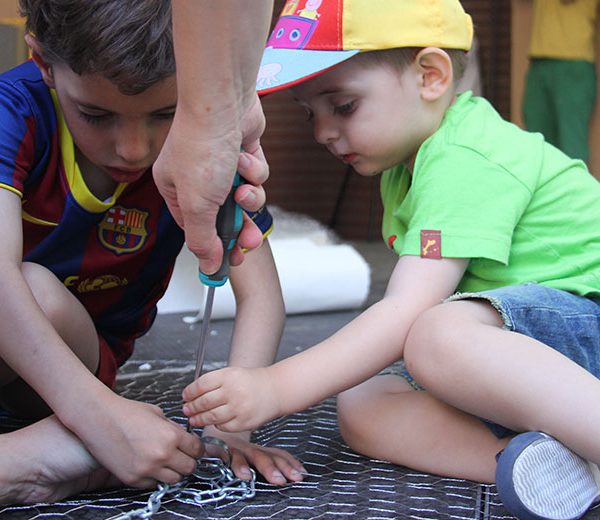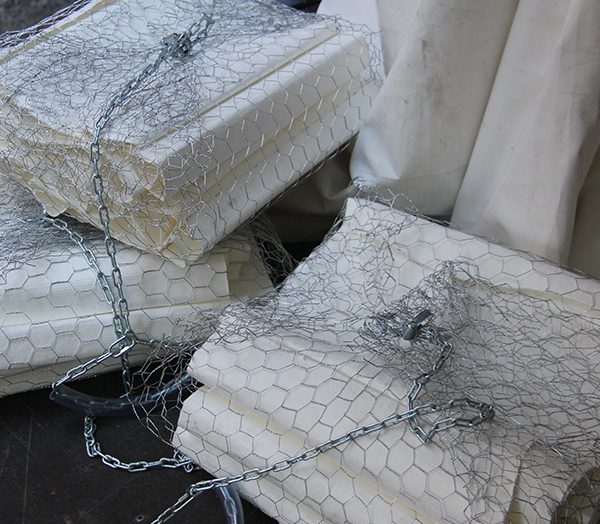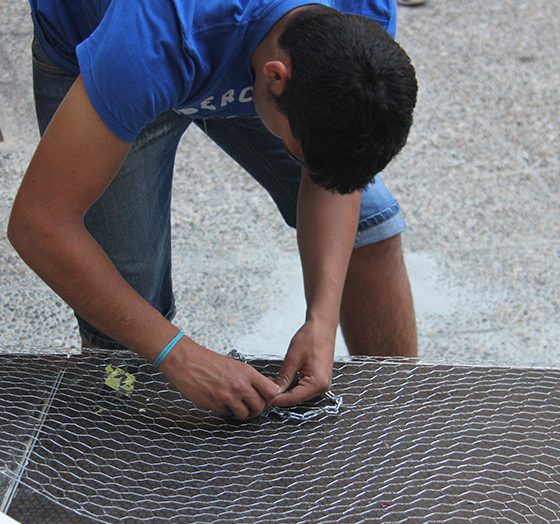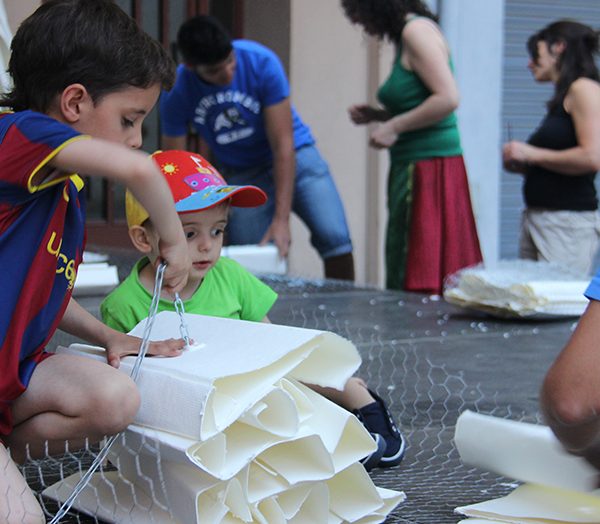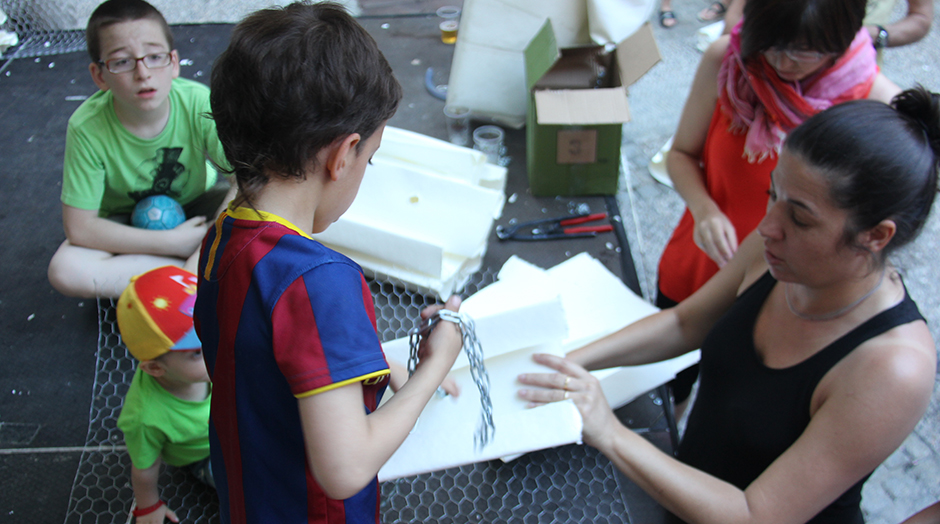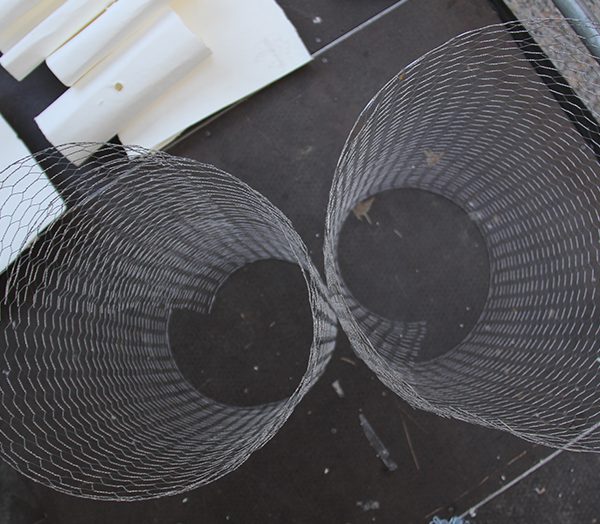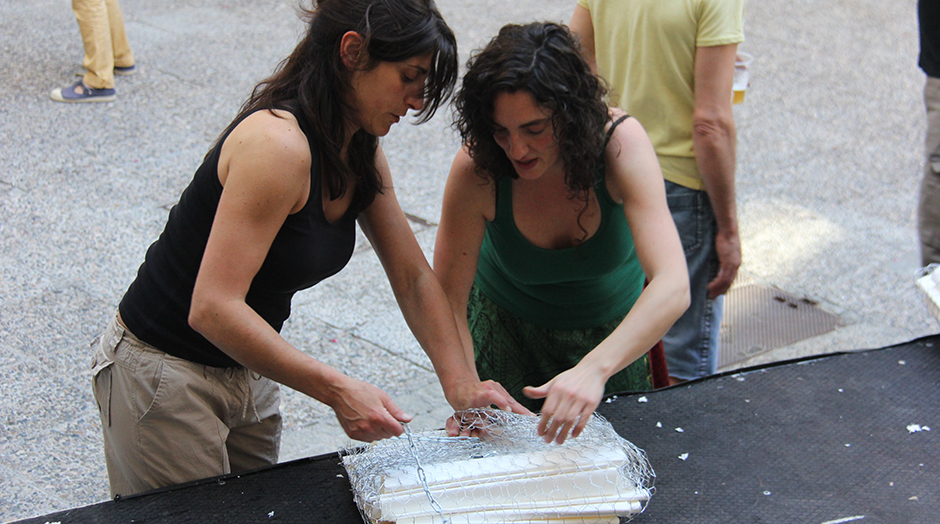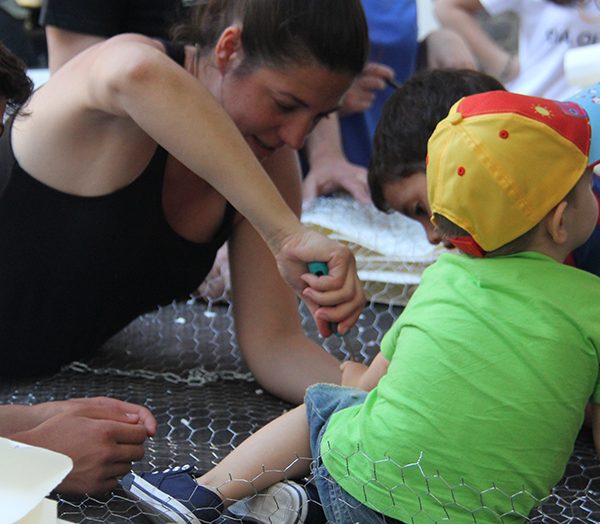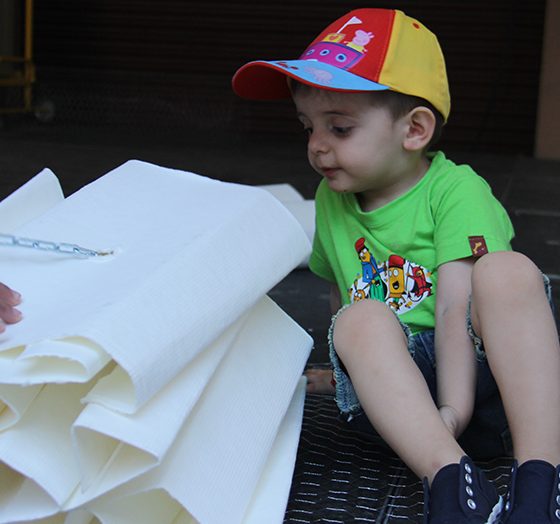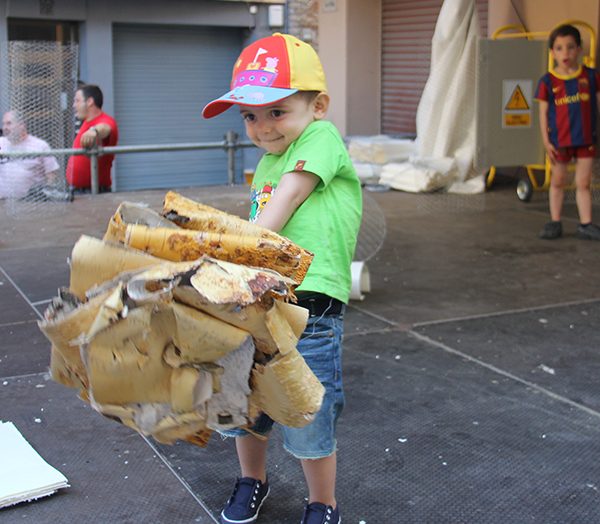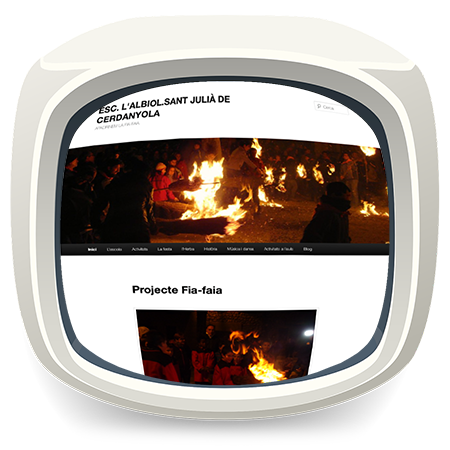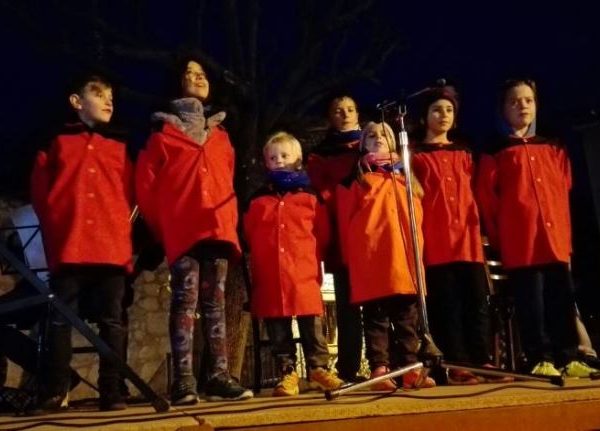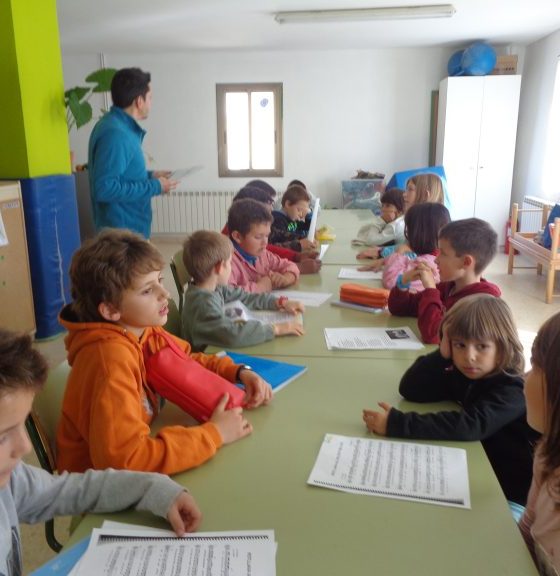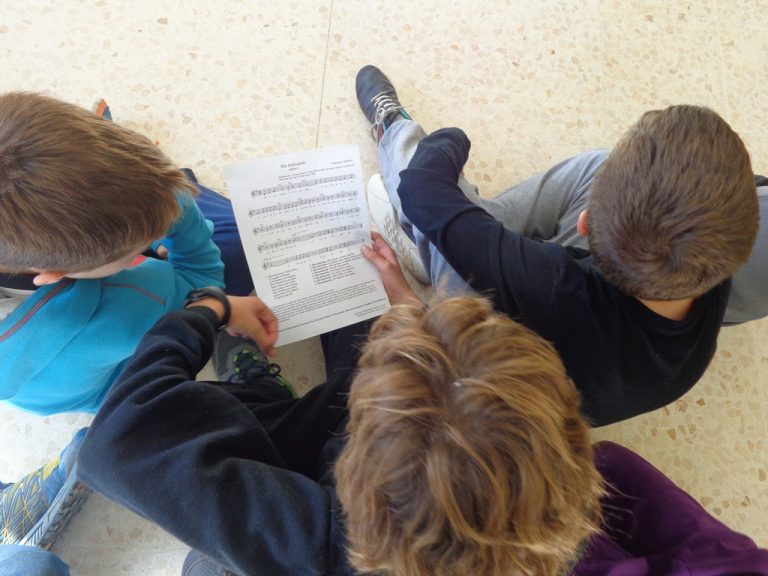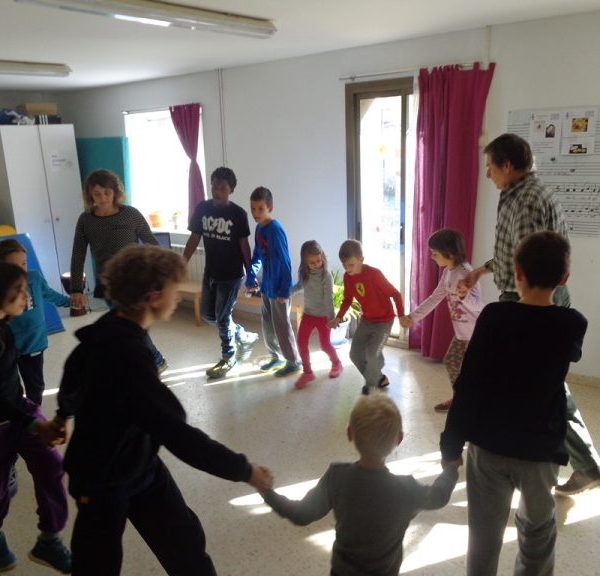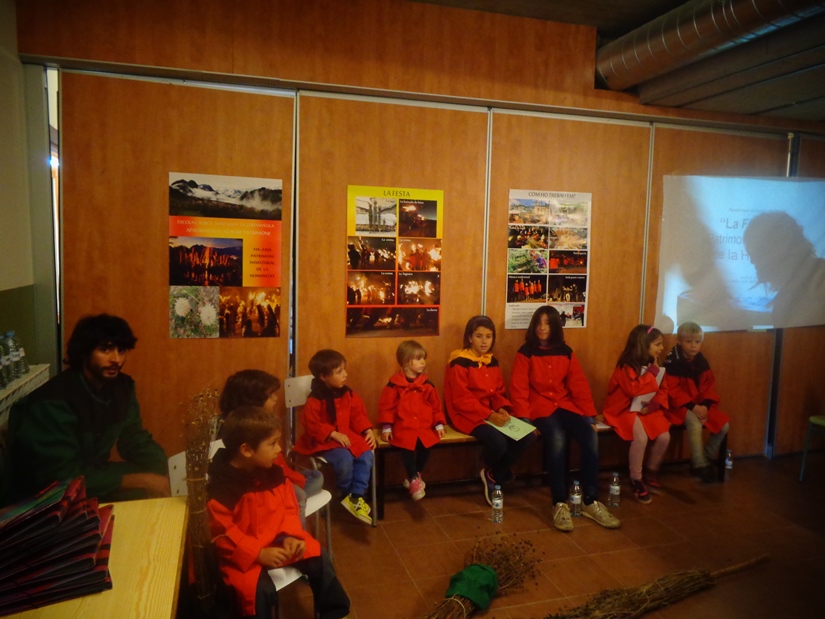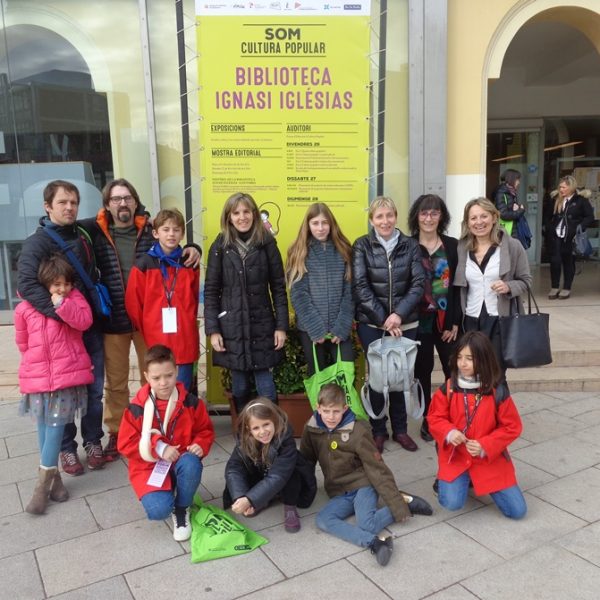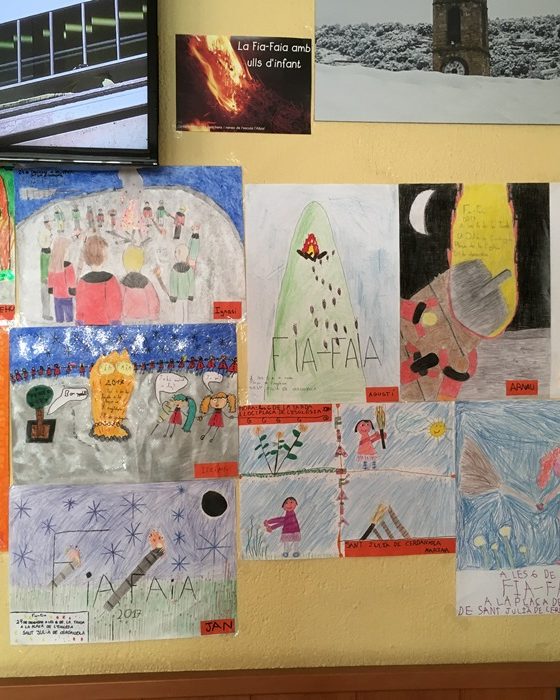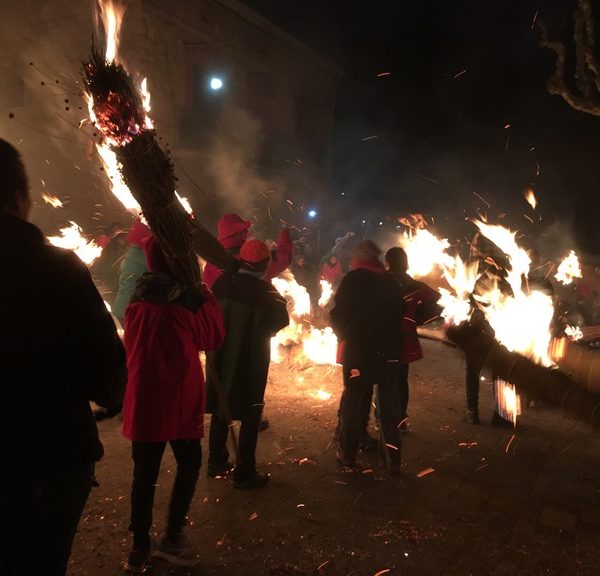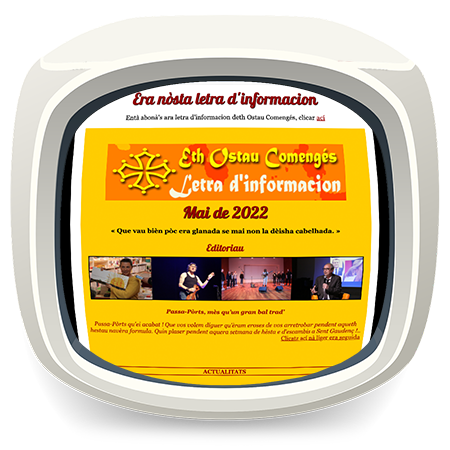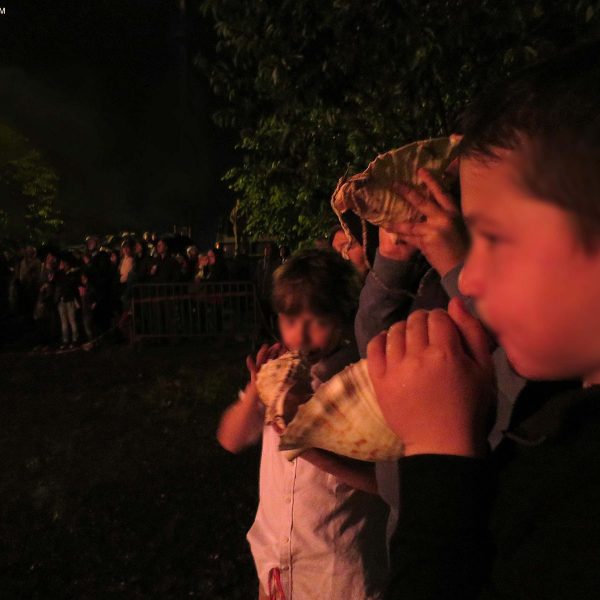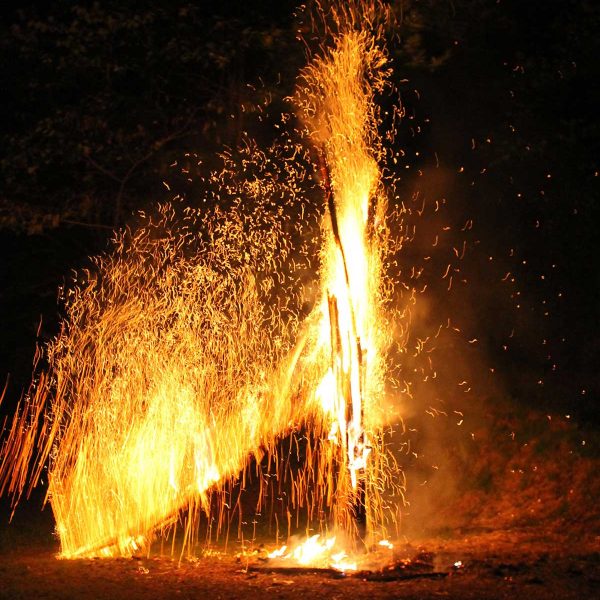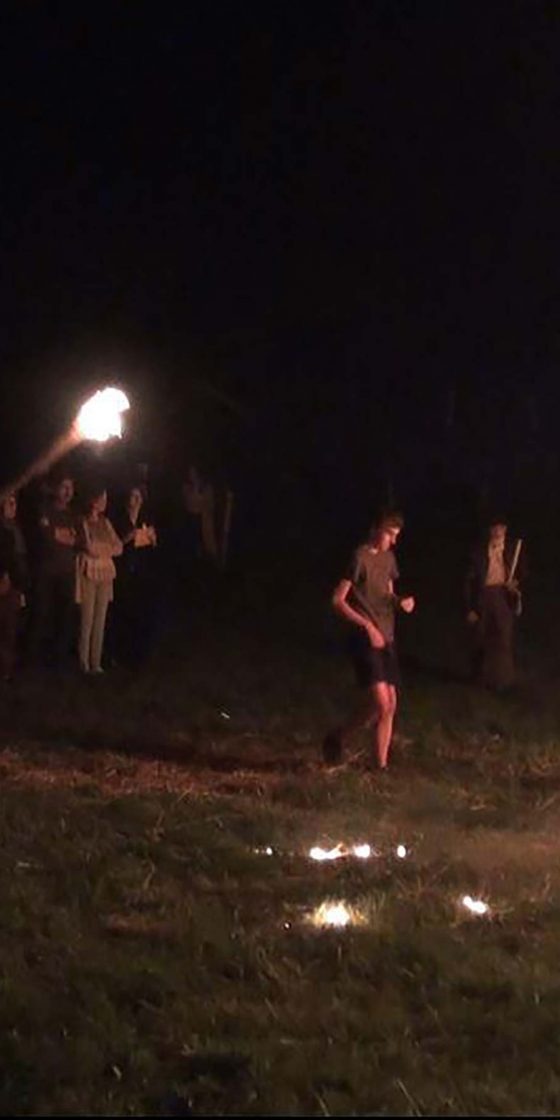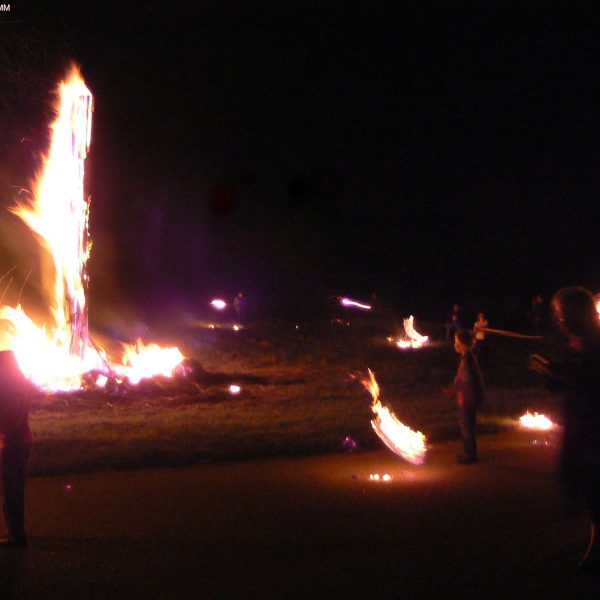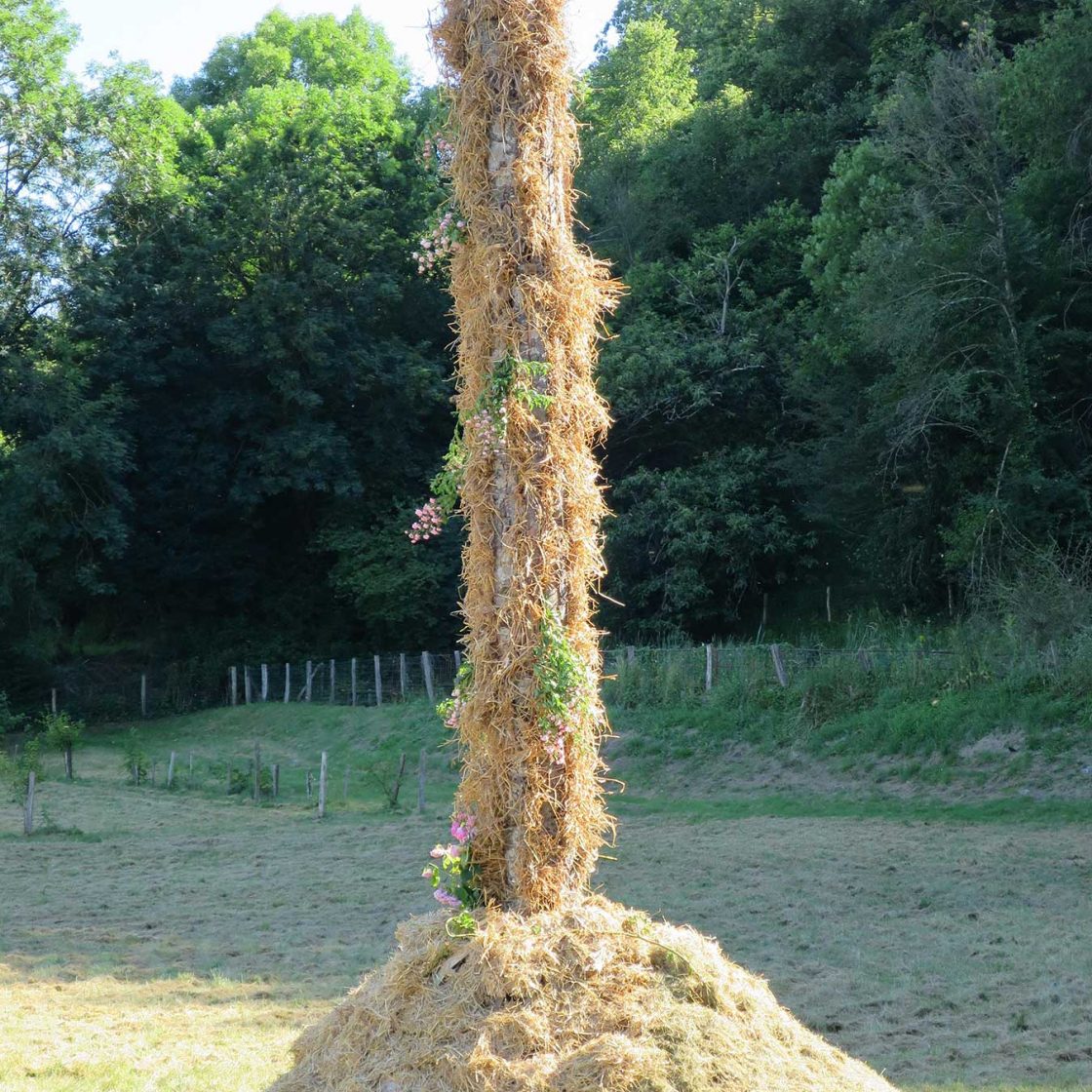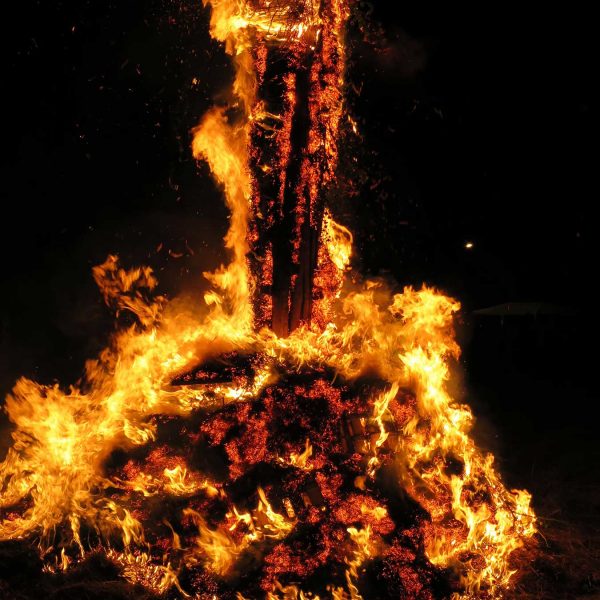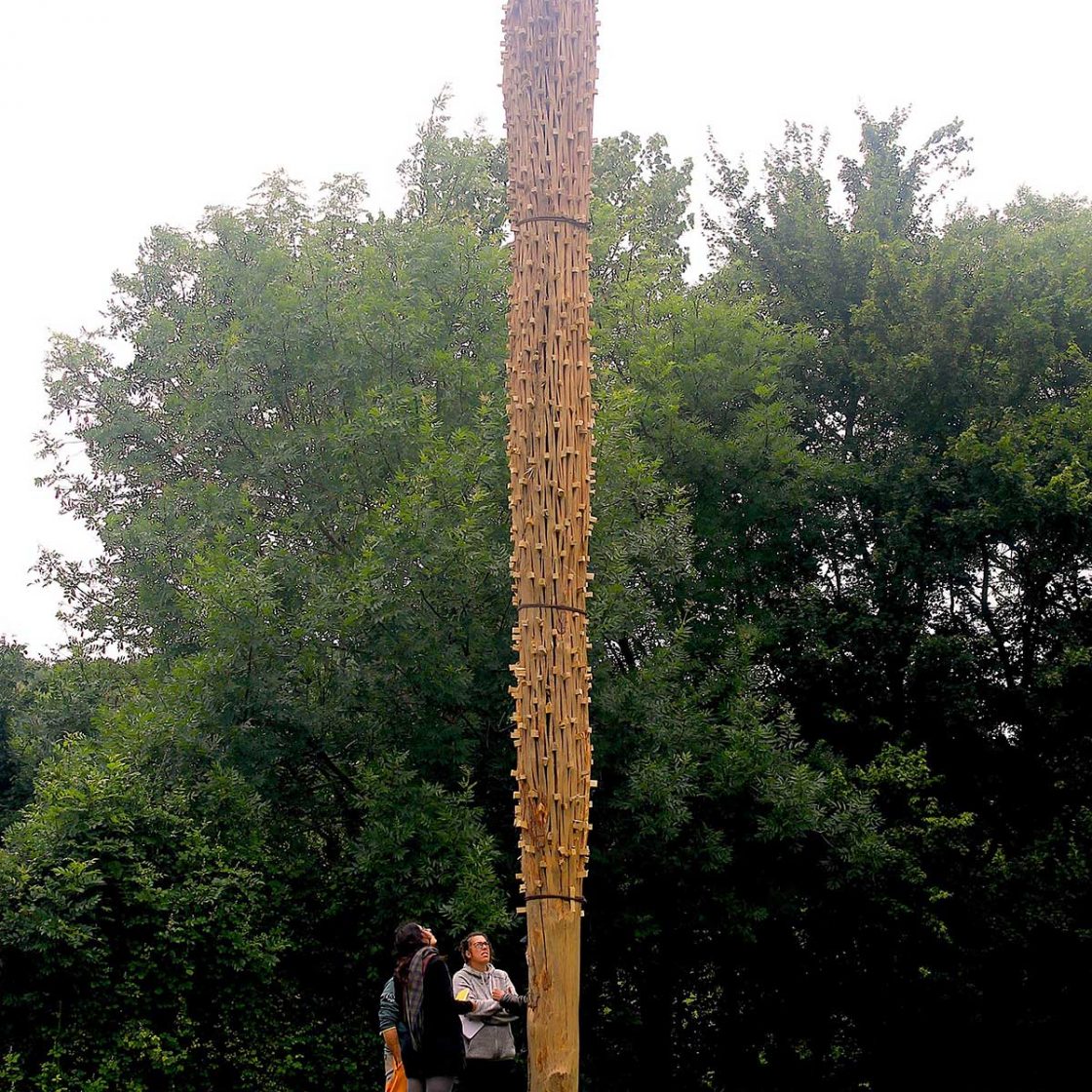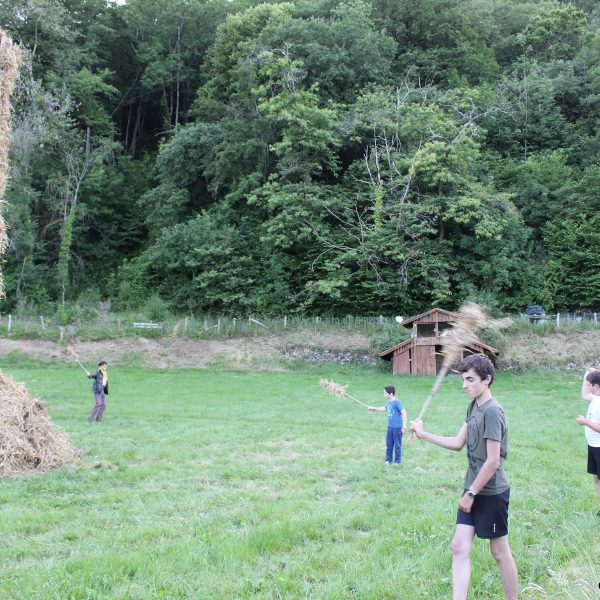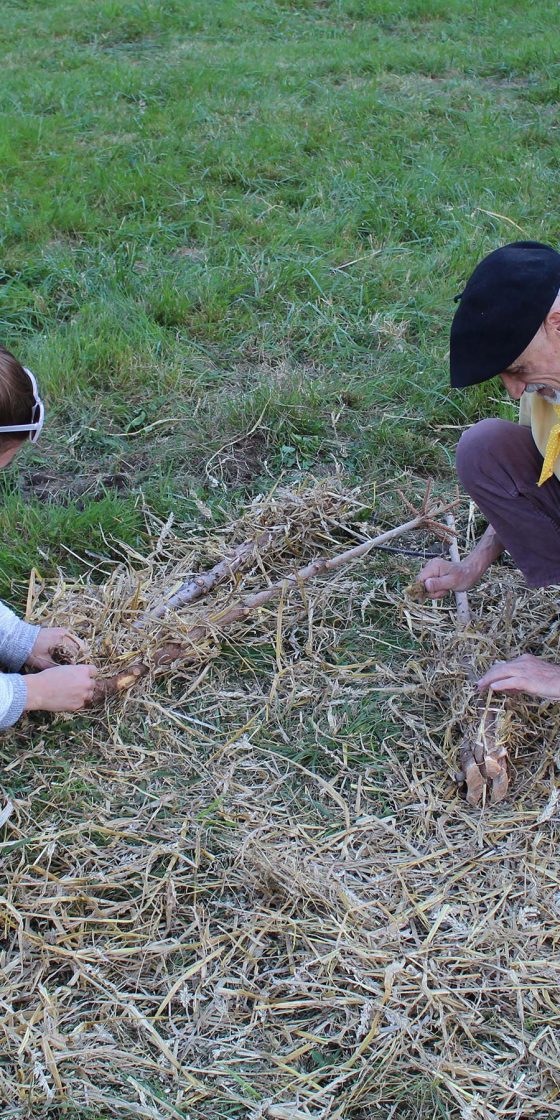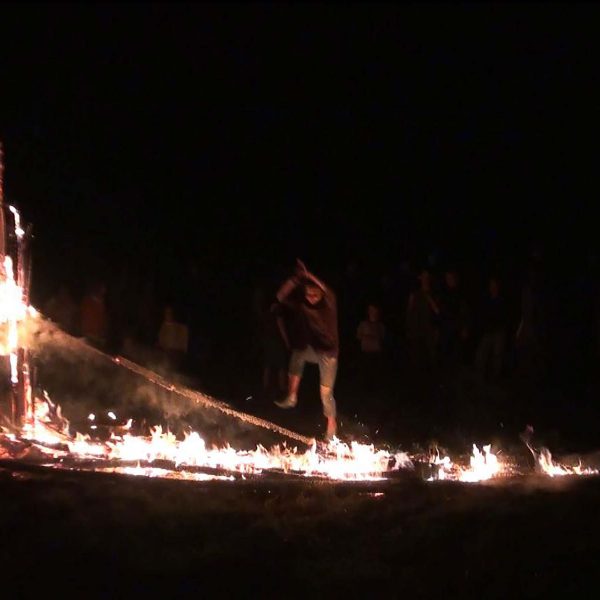The little fallaries
The children and young people play an active role in solstice fire festivals. They help with the preparation of the “falles” and they also take part in the celebration. This happens in all the different places and means that the festival will be kept alive.
Andorra
The children swing “balls of light.” These are balls with different colored lights inside that are swung in circles. This was started in 2005 as a way of introducing children to the festival.
Like adults, they also wear a cape and there is a contest to choose the Junior fallaire, the person who will represent the festival for a year and play a leading role in festivities. When children get older, they are subjected to a “baptism of fire,” which enables them to graduate to swinging balls of fire.
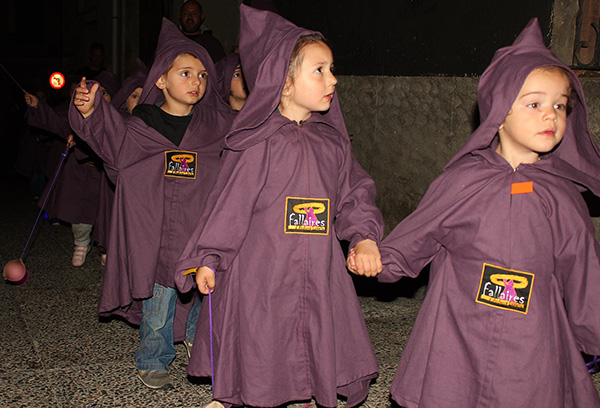
photo © Fons Associació Fallaires Andorra la Vella
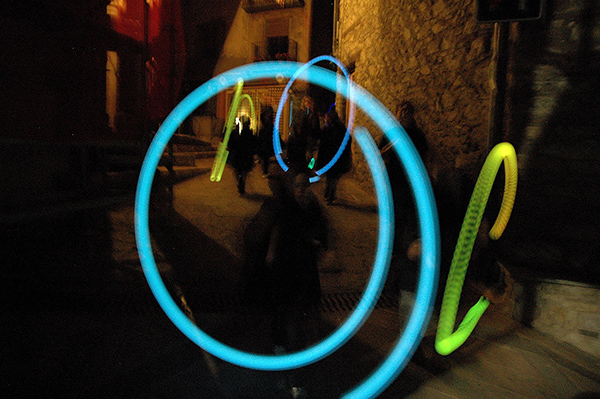
photo © Fons Associació Fallaires Andorra la Vella
Aran Valley
In the Aran Valley, children also participate in the festival. In the village of Les, they dance around a big trunk called a Haro, which is put up in the middle of the village square. In Arties, the trunk is called a Taro and is set on fire and dragged around the village, while people try to jump over it. The children have a smaller version of the Taro that is also dragged through the village.
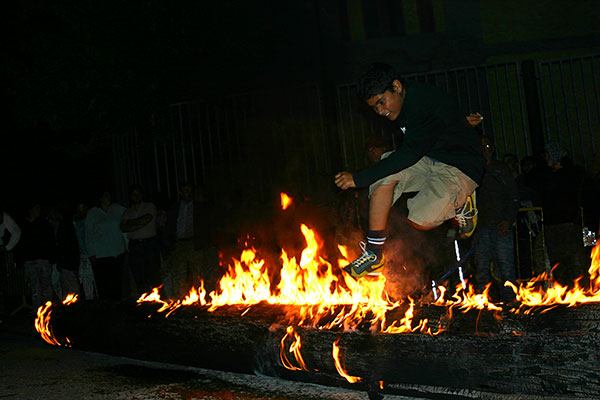
photo © Mathilde Lamothe
Aragon and Catalonia
Like adults, the children bring burning falles down the mountain to the village, making paths of light as they walk. The children carry smaller falles and start from closer to the village. When they are older, they join the adults.
During troubled times, such as during the Civil War or when Franco was in power, children were the only ones to celebrate the festival.
Here you can find out more about Maria and Mariona, two young fallaires from Boí:
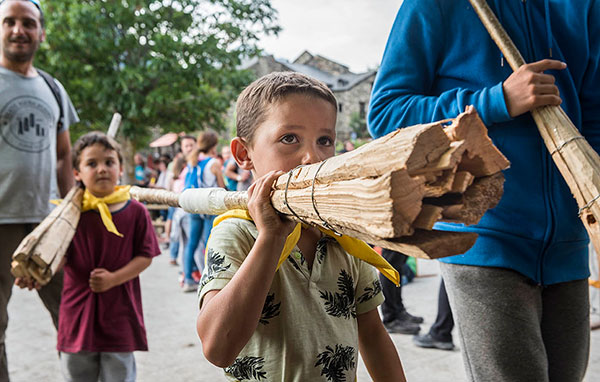
photo © Oscar Rodbag
Occitania
Children are the most important people in some villages. They burn the halhas and swing them around in circles in front of the har or brandon, a tall tree trunk put up in the village square or just outside the village. Both the children’s halhas and the har may be covered with straw and decorated with bouquets of flowers.
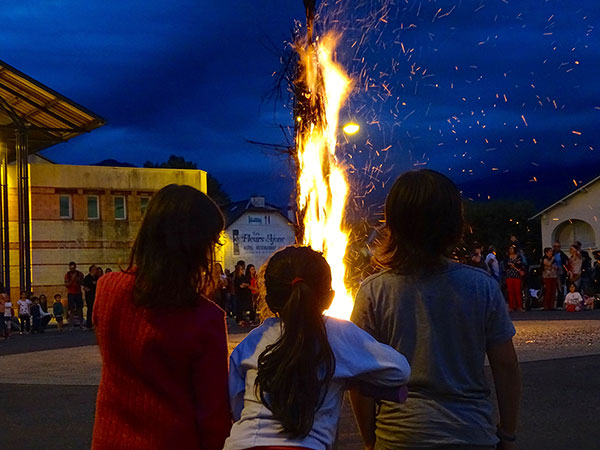
photo © Mathilde Lamothe
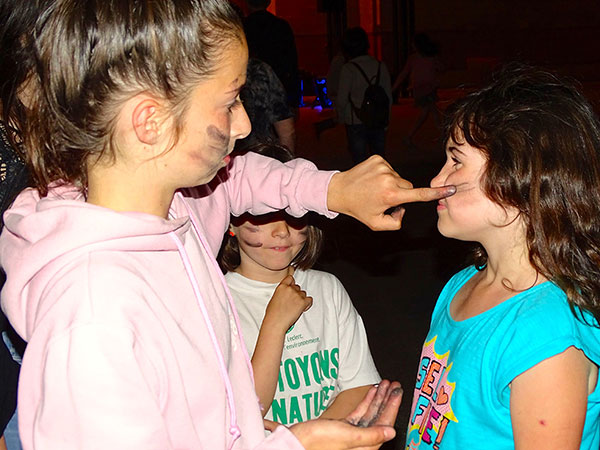
photo © Mathilde Lamothe
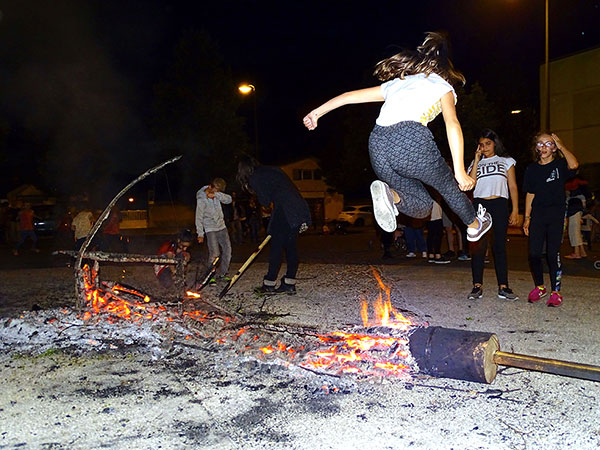
photo © Mathilde Lamothe
Educational activities for children
Before the solstice festival itself, there are educational activities for children related to the festival, with associations or town councils organizing games or workshops on making “falles”.
Andorra
Fallas groups in Andorra are very active. In association with UNESCO, there are talks and workshops for children in primary and secondary schools.
Aran, Aragon and Catalonia
Apart from the activities carried out by associations and municipalities, there are special programs in schools in some villages on an annual, biannual, or occasional basis. These include Bagà in the Berguedà region, Saünc in Ribagorça, and Les in the Aran Valley. As part of the Catalan Government’s “Apadrinem el patrimoni” (We sponsor heritage) program, the Albiol school in Sant Julià de Cerdanyola (Berguedà) has been delivering programs on falles since 2015, when the festival was recognized by UNESCO. Click below to find out what they have been doing: www.blocs.xtec.cat
Occitania
The most active association in teaching is Eth Ostau Comengés, which apart from its usual awareness-raising, works with schools and offers workshops on Saint John’s Eve festivities. Click below for more information: www.ostaucomenges.org
 Occitan
Occitan

